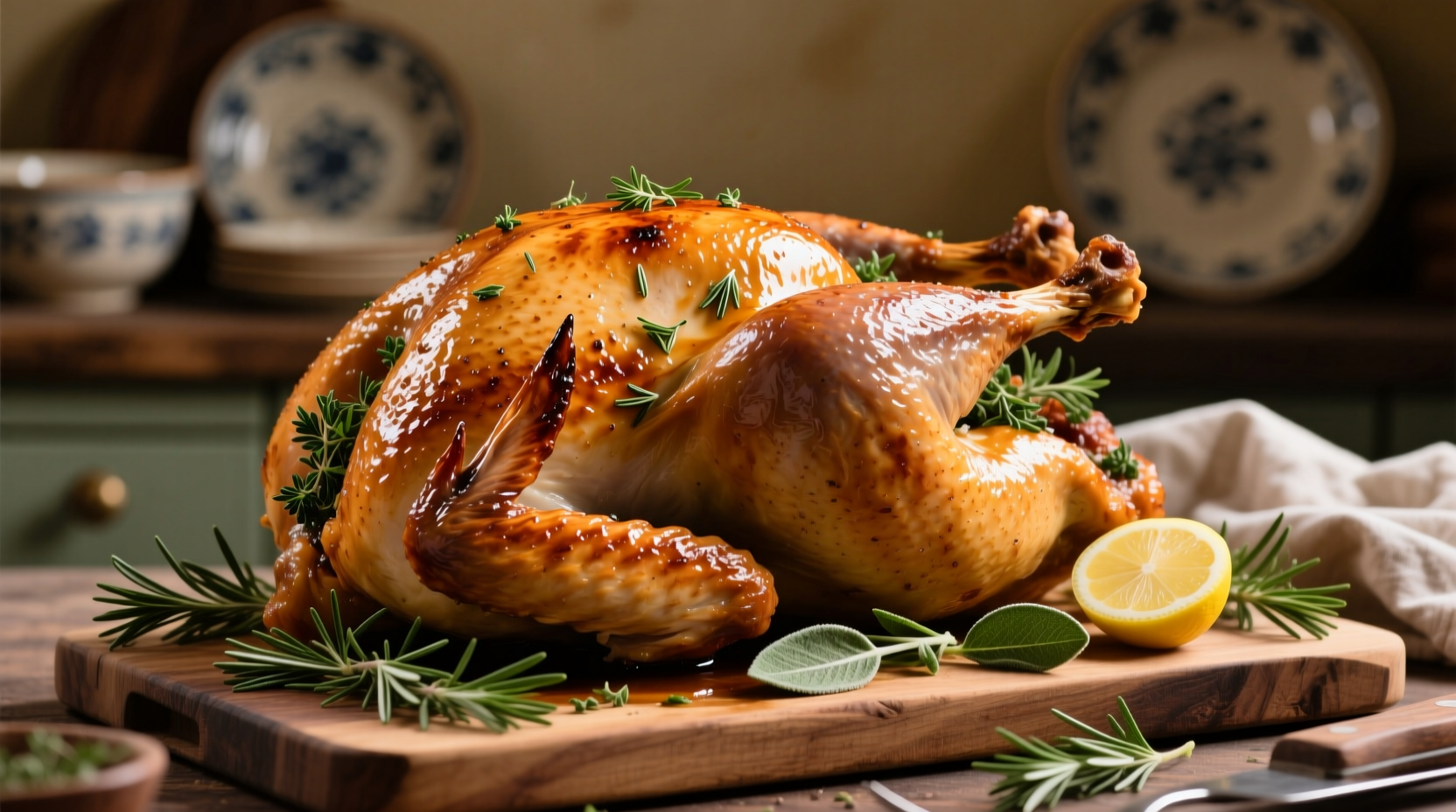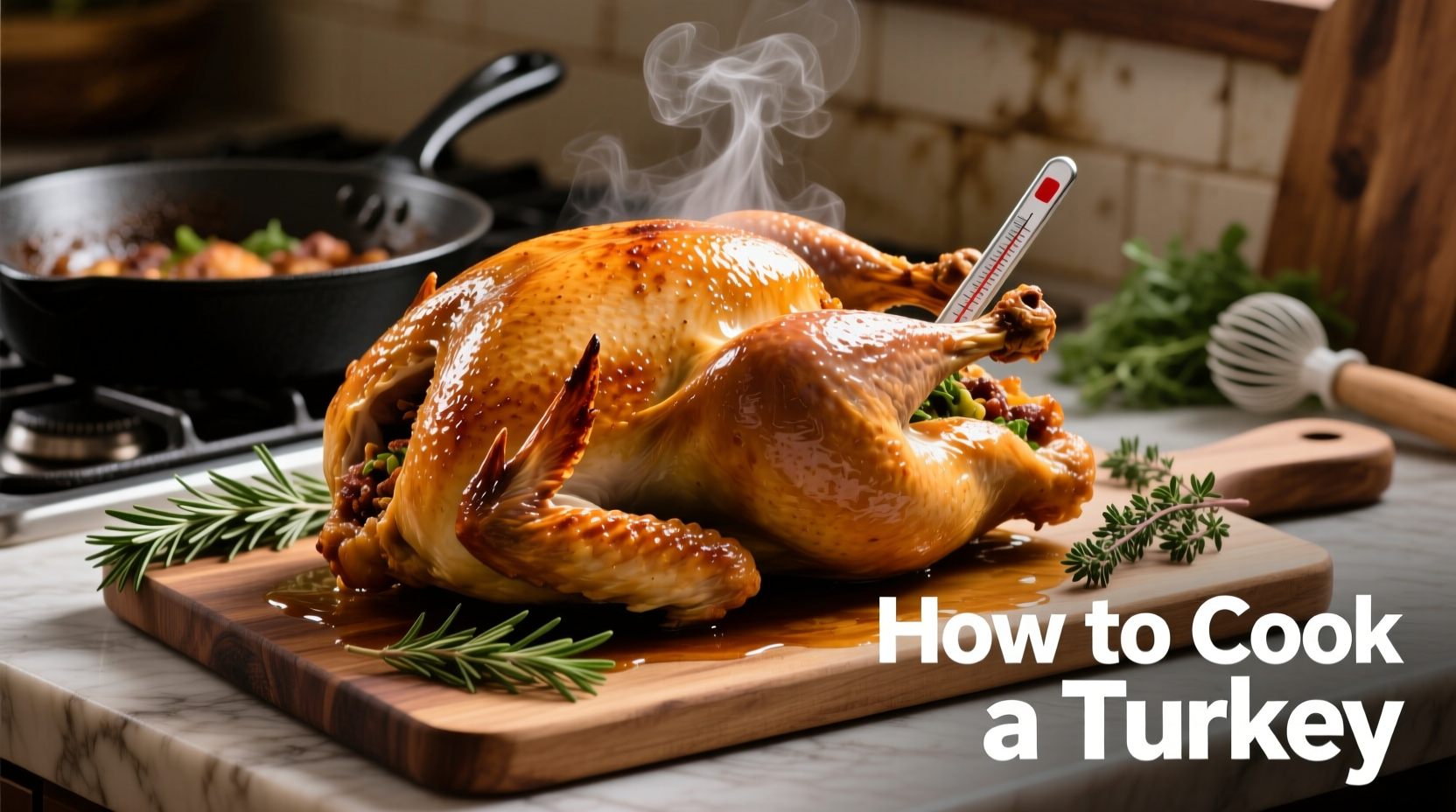Mastering the Perfect Roast Turkey: Your Complete Cooking Guide
Nothing says celebration like a beautifully cooked turkey, but achieving that perfect balance of moist meat and crispy skin requires more than just following basic instructions. Whether you're preparing your first holiday meal or refining your technique after years of experience, understanding the science behind turkey preparation transforms your results from hit-or-miss to consistently impressive.
Why Proper Turkey Preparation Matters
According to the USDA Food Safety and Inspection Service, improperly cooked poultry causes nearly 2 million foodborne illness cases annually in the United States. The National Turkey Federation reports that 88% of Americans serve turkey during Thanksgiving, making proper cooking techniques essential knowledge for home chefs. When you understand the why behind each step—not just the how—you gain the confidence to adapt techniques to your specific kitchen conditions.
Essential Preparation Timeline
Planning starts days before cooking. Rushing preparation leads to uneven cooking and potential food safety risks. Here's your science-backed timeline:
| Thawing Method | Time Required (per 4-5 lbs) | Safety Notes |
|---|---|---|
| Refrigerator Thawing | 24 hours | Maintains safe temperature (below 40°F) throughout process |
| Cold Water Thawing | 30 minutes | Change water every 30 minutes; cook immediately after thawing |
| Never Thaw At Room Temperature | N/A | Danger zone: 40°F-140°F promotes rapid bacteria growth |
This thawing timeline comes directly from the USDA Food Safety and Inspection Service guidelines, which recommend refrigerator thawing as the safest method for home preparation.
Professional-Grade Seasoning Techniques
Seasoning isn't just about flavor—it affects moisture retention and skin texture. Professional chefs use these three approaches:
- Dry Brine (36-48 hours before cooking): Rub 1 tablespoon kosher salt per 5 pounds of turkey under the skin and on the surface. This draws out moisture temporarily, then allows the meat to reabsorb seasoned liquid for deeper flavor penetration.
- Wet Brine (12-24 hours before cooking): Submerge turkey in solution of 1 cup salt, 1/2 cup sugar, and gallon of water with aromatics. Ideal for leaner birds but requires careful timing to avoid mushy texture.
- Compound Butter Method (Immediately before cooking): Mix softened butter with herbs and slide under breast skin. Provides immediate flavor and moisture barrier during cooking.

Optimal Cooking Methods Compared
Different cooking techniques yield dramatically different results. Choose based on your priorities:
| Method | Cooking Time (12-14 lb) | Best For | Key Temperature |
|---|---|---|---|
| Traditional Roasting | 3-3.75 hours | Classic presentation | 325°F oven |
| Spatchcocked | 1.5-2 hours | Faster cooking, even browning | 425°F oven |
| Deep Fried | 3-4 minutes per pound | Crispy skin enthusiasts | 350°F oil |
| Smoked | 5-7 hours | Flavor complexity | 225-250°F smoker |
Step-by-Step Roasting Process
Follow these precise steps for foolproof results every time:
- Preheat oven to 325°F with rack in lower third position
- Prepare bird: Remove giblets, pat thoroughly dry with paper towels
- Season: Apply chosen seasoning method, tucking wing tips
- Position: Place breast-side up on rack in roasting pan with 1 cup broth
- Initial cooking: Roast uncovered for 1 hour to begin skin browning
- Temperature monitoring: Insert probe thermometer into thickest breast area
- Basting: Every 45 minutes with pan juices (optional but recommended)
- Foiling: Tent breast with foil when temperature approaches 150°F
- Final check: Verify 165°F in breast, thigh, and wing joint before removing
- Resting: Let stand 30-45 minutes before carving (critical for juicy results)
Avoiding Common Turkey Mistakes
Even experienced cooks make these preventable errors:
- Not using a thermometer: Visual cues alone can't confirm safe internal temperature. The USDA mandates 165°F as the minimum safe temperature for poultry.
- Cutting too soon: Resting allows juices to redistribute. Cutting immediately causes moisture loss.
- Overcrowding the pan: Prevents proper air circulation, leading to steamed rather than roasted skin.
- Ignoring carryover cooking: Temperature rises 5-10°F after removal from oven.
Food Safety Essentials You Must Know
According to FDA food safety guidelines, turkey must reach 165°F internal temperature to eliminate harmful bacteria like salmonella and campylobacter. Use an instant-read thermometer in three locations: the innermost part of the breast, the innermost part of the thigh, and the thickest part of the wing. Never rely on pop-up timers alone—they often trigger before the turkey reaches safe temperature.
Leftover turkey must be refrigerated within two hours of cooking (one hour if room temperature exceeds 90°F). Store in shallow containers for rapid cooling and consume within 3-4 days, or freeze for longer storage.
Troubleshooting Guide
When problems arise, these solutions save your meal:
- Dry breast meat: Next time, try spatchcocking or shield breast with foil during initial cooking phase.
- Undercooked turkey: Return to oven immediately—even if carving has begun. Use a thermometer to monitor progress.
- Burnt skin: Reduce oven temperature by 25°F and tent with foil for remaining cooking time.
- Uneven cooking: Rotate pan 180 degrees halfway through cooking for even heat distribution.
Perfect Carving Technique
Proper carving maximizes your efforts:
- Remove legs by cutting through hip joint
- Separate drumsticks from thighs
- Slice breast meat against the grain in 1/4-inch slices
- Remove wings at joints
- Serve dark and white meat separately for optimal enjoyment











 浙公网安备
33010002000092号
浙公网安备
33010002000092号 浙B2-20120091-4
浙B2-20120091-4